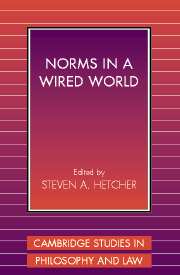Book contents
1 - Rule Conception Versus Pattern Conception
Published online by Cambridge University Press: 05 June 2012
Summary
Practice has introduced rules rather than rules have directed practice.
Samuel JohnsonIntroduction
In part due to the diversity of disciplinary approaches to the topic of norms, a number of definitions of the term norm circulate. This first chapter will defend what I will call the pattern conception of a norm. On this view, a norm is a pattern of rationally governed behavior, instantiated in a group, maintained by acts of conformity. In contrast, on the dominant conception, norms are inherently rulelike, that is, norms are statements that individuals and groups generate and promulgate to guide their conduct. I will refer to this as the rule conception or rule view. This chapter will argue that the rule conception is deficient and, in the end, beyond repair.
Because norms and customs are behavioral patterns and not linguistic rules, they have rational structures rather than grammatical structures. The next two chapters develop an account of these structures based on a Hobbesian assumption of narrow self-interest. Subsequently, Chapter Four develops an account based on a broader Humean conception of rationality, one that is consistent with the existence of genuinely moral motivation. This position is called predominant egoism. On this motivational assumption, moral norms may emerge as a result of norm conformity.
Finally, Chapter Five will examine the potential for norm maintenance based on the motivational assumptions of leading critical moral-theoretic approaches. In this manner, the chapters of Part One will successively layer moral theory on top of rational theory, going from the purely rational to the purely moral.
- Type
- Chapter
- Information
- Norms in a Wired World , pp. 17 - 37Publisher: Cambridge University PressPrint publication year: 2004

